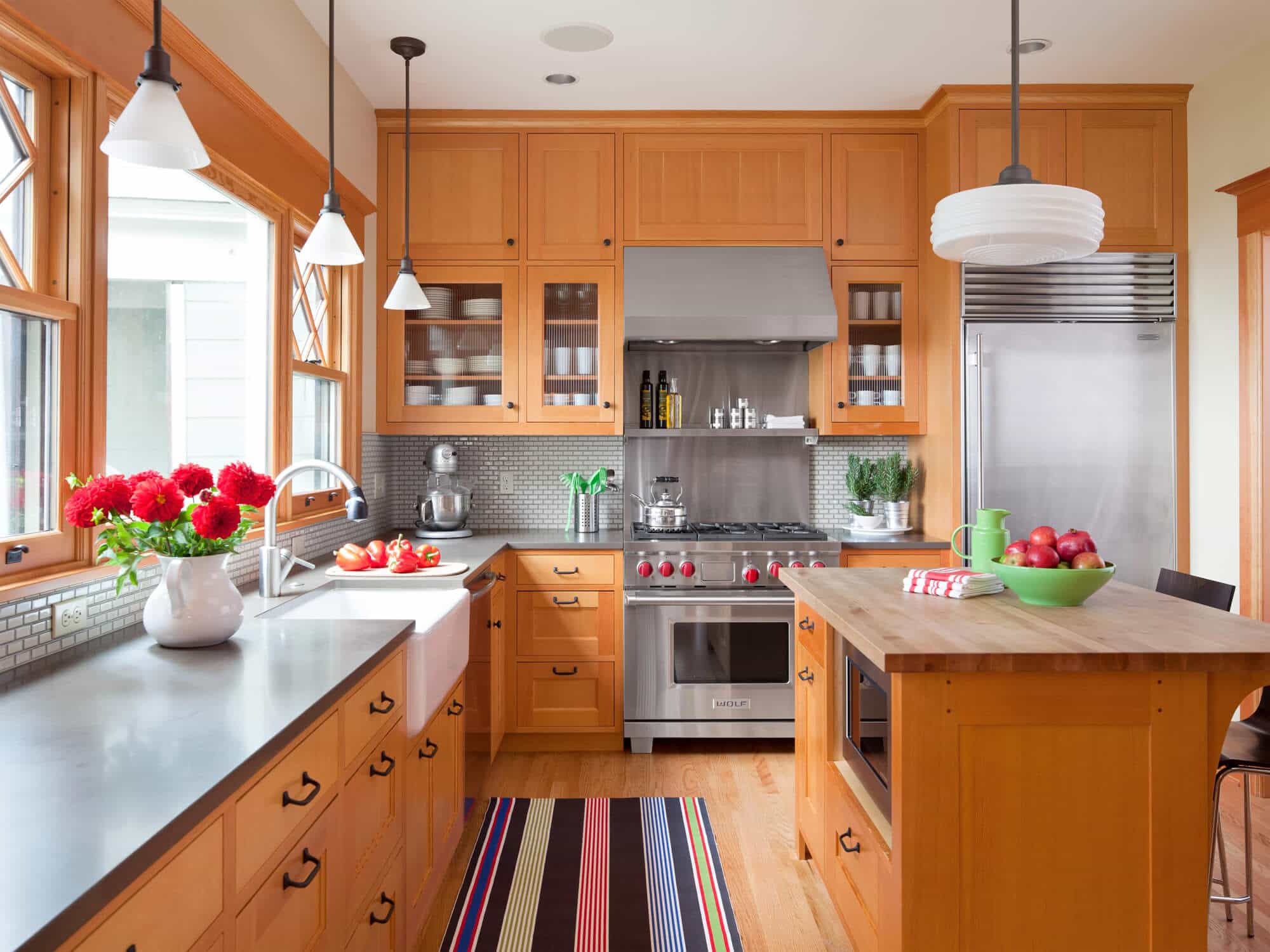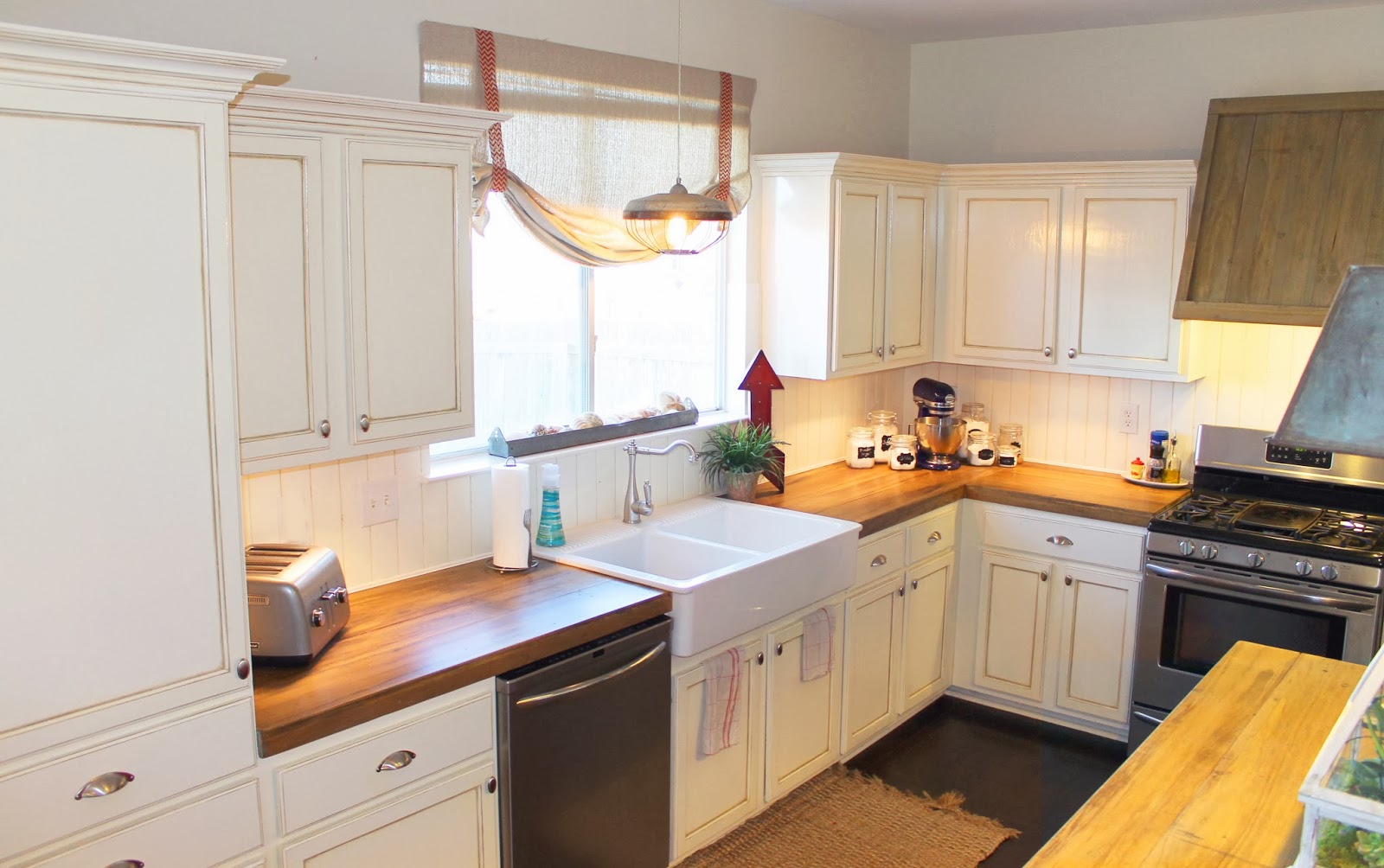The Allure of White Counters with Wood Cabinets: Wood Cabinets White Counter

The pairing of white countertops with wood cabinets has become a timeless classic in kitchen design. This combination exudes an aura of elegance and sophistication, effortlessly blending warmth and brightness to create a welcoming and inviting space.
The Timeless Elegance of White Counters and Wood Cabinets
White countertops offer a clean and crisp backdrop that allows the natural beauty of wood cabinets to take center stage. The contrast between the cool, bright white and the warm, earthy tones of wood creates a visually appealing harmony. This classic pairing is both versatile and enduring, complementing a wide range of kitchen styles and design aesthetics.
Different Wood Cabinet Styles that Complement White Countertops
The versatility of white countertops allows them to seamlessly integrate with various wood cabinet styles, each adding a unique character to the kitchen.
- Traditional: White countertops complement traditional wood cabinets, often crafted from cherry, maple, or oak, with intricate details and ornate hardware. This combination evokes a sense of classic charm and timeless elegance.
- Modern: Sleek and minimalist, modern kitchens often feature white countertops paired with contemporary wood cabinets in sleek finishes like walnut or ash. The clean lines and smooth surfaces of both elements create a sophisticated and streamlined aesthetic.
- Rustic: For a warm and inviting atmosphere, white countertops can be paired with rustic wood cabinets, often featuring reclaimed wood or distressed finishes. The combination adds a touch of natural charm and warmth, creating a cozy and inviting kitchen.
- Contemporary: Contemporary kitchens often feature white countertops paired with wood cabinets in bold colors or unique textures. This combination allows for a playful and expressive approach to design, creating a space that is both modern and inviting.
Enhancing Brightness and Spaciousness
White countertops have a remarkable ability to enhance the overall brightness and spaciousness of a kitchen, especially in smaller spaces. The light-reflecting properties of white create an illusion of more space, making the kitchen feel airy and open. This effect is further amplified when paired with wood cabinets, as the warmth of the wood adds a sense of depth and dimension to the space.
Material Considerations for Wood Cabinets and White Countertops

Choosing the right materials for your kitchen cabinets and countertops is crucial, as they’ll form the foundation of your kitchen’s style and functionality for years to come. This decision involves weighing aesthetics, durability, maintenance requirements, and budget.
Wood Species for Cabinets
Wood cabinets are a timeless classic, offering warmth and natural beauty to any kitchen. Several popular wood species are known for their unique characteristics and durability.
- Oak: A durable and versatile hardwood, oak is a popular choice for cabinets due to its strength, resistance to scratches, and beautiful grain patterns. Its warm tones can range from light to dark, providing versatility in kitchen design.
- Maple: Known for its hard, dense wood, maple is highly resistant to scratches and dents. It boasts a clean, light color with subtle grain patterns, often used in modern kitchens for a sleek and minimalist aesthetic.
- Cherry: Cherry wood is prized for its rich reddish-brown hue and distinctive grain patterns. It’s known for its durability and ability to age gracefully, developing a beautiful patina over time. Cherry wood cabinets often create a warm and inviting atmosphere.
- Walnut: Walnut wood stands out with its deep brown color and striking grain patterns, adding a touch of elegance to any kitchen. It’s a durable and luxurious option, often favored for its rich color and unique character.
White Countertop Materials, Wood cabinets white counter
White countertops offer a clean, bright, and versatile backdrop for any kitchen design. Several popular materials offer distinct advantages and disadvantages.
- Quartz: A non-porous engineered stone, quartz is highly durable and resistant to scratches, stains, and heat. It comes in a wide variety of colors and patterns, including many white options. Quartz requires minimal maintenance, making it a popular choice for busy kitchens. It is also more resistant to bacteria growth than natural stone.
- Granite: A natural stone known for its unique veining and durability, granite is heat-resistant and scratch-resistant. It comes in various white shades, often with subtle or dramatic veining. Granite requires regular sealing to prevent staining and requires more maintenance than quartz.
- Marble: A luxurious natural stone, marble is known for its elegant veining and timeless beauty. It’s susceptible to scratches, stains, and etching, requiring careful maintenance. Marble is a porous material and requires regular sealing to protect it from spills and stains. Marble’s unique beauty and character come at a cost, both in terms of price and maintenance.
- Laminate: An affordable and versatile option, laminate countertops are made from layers of paper impregnated with resin. They come in a wide range of colors and patterns, including many white options. Laminate is easy to clean and maintain, but it’s less durable than natural stone or engineered stone. It’s also susceptible to scratches and heat damage.
Combining Countertop Materials
A growing trend in kitchen design is to combine different countertop materials to create visual interest and enhance functionality. For example, you could use quartz for the main work area and marble for an island or breakfast bar, showcasing different textures and colors.
- Visual Contrast: Combining materials like quartz and marble can create a visually striking contrast, adding depth and dimension to your kitchen design.
- Functional Zones: Using different materials for specific kitchen areas can enhance functionality. For instance, quartz’s durability might be ideal for the main work area, while the elegance of marble could be perfect for a dedicated food prep area.
- Budget Considerations: Combining different countertop materials can allow you to achieve a luxurious look while staying within budget. You could opt for a more affordable material like laminate for less-used areas and a more expensive material like quartz for the main work area.
Designing with White Countertops and Wood Cabinets

Choosing white countertops and wood cabinets is a classic combination that can create a timeless and elegant kitchen. However, the design process goes beyond simply selecting these materials. It involves thoughtful consideration of how to complement and enhance each other, ultimately achieving a harmonious and visually appealing space.
Choosing the Right White Countertop Shade
The shade of white you choose for your countertops will significantly impact the overall feel of your kitchen. It’s essential to consider the undertones of the white and how they interact with the wood cabinets. For instance, a warm white countertop will complement warm wood tones like cherry or walnut, while a cool white countertop will pair well with cooler wood tones like maple or ash.
- Warm Whites: Warm whites have a yellow or beige undertone, creating a welcoming and cozy atmosphere. They pair well with warm wood tones, such as cherry, walnut, and hickory. Examples of warm white countertop materials include Crema Marfil marble, honed Carrara marble, and quartzite with a warm beige undertone.
- Cool Whites: Cool whites have a blue or gray undertone, providing a crisp and modern feel. They complement cooler wood tones, such as maple, ash, and white oak. Examples of cool white countertop materials include Statuario marble, Calacatta marble, and white quartz with a cool gray undertone.
- Neutral Whites: Neutral whites have a balanced undertone, neither leaning too warm nor too cool. They offer versatility and blend seamlessly with various wood tones. Examples of neutral white countertop materials include Carrara marble with a less pronounced yellow undertone, honed white granite, and white quartz with a subtle gray or beige undertone.
Lighting also plays a crucial role in how white countertops appear. Natural light will enhance the brightness of the white, while artificial light can influence its undertones. Consider the lighting conditions in your kitchen and choose a white countertop shade that complements the overall ambiance.
Designing a Kitchen Layout
The layout of your kitchen is essential for functionality and aesthetics. Integrating white countertops and wood cabinets effectively requires careful planning to ensure a balanced and visually appealing design.
- Cabinet Configurations: You can create different kitchen layouts using various cabinet configurations. For instance, a galley kitchen with linear cabinets on opposite walls can create a streamlined and efficient space. A U-shaped kitchen with cabinets along three walls offers ample storage and workspace. An L-shaped kitchen with cabinets along two adjacent walls provides a more open layout, ideal for smaller kitchens.
- Countertop Placement: The placement of your countertops is crucial for maximizing workspace and creating a functional kitchen. Consider the location of appliances, sink, and other key elements. For example, placing a large countertop island in the center of the kitchen can provide additional workspace and storage. A peninsula countertop can serve as a breakfast bar or a space for casual dining.
Visual Representation of a Kitchen with White Countertops and Wood Cabinets
Imagine a kitchen with white quartz countertops and warm cherry wood cabinets. The white countertops provide a clean and bright backdrop, while the cherry wood cabinets add warmth and richness to the space. The backsplash is a subtle mosaic tile with a soft gray undertone, complementing the cool white undertones of the countertops. Recessed lighting illuminates the countertops, highlighting their sleekness and enhancing the overall brightness of the kitchen. Brushed nickel hardware adds a touch of sophistication to the cabinets, while stainless steel appliances create a modern contrast.
Wood cabinets white counter – Wood cabinets with white counters offer a timeless and elegant look, perfect for creating a sense of calm and order in any space. For a touch of modern vibrancy, consider incorporating a color scheme inspired by a modern blue and green bedroom , where cool tones create a sense of tranquility.
The combination of wood cabinets, white counters, and a calming blue-green palette can transform your kitchen or bathroom into a sanctuary of style and sophistication.
The clean lines of wood cabinets paired with a crisp white countertop create a timeless and inviting kitchen space. However, when it comes to a bedroom above a garage, maintaining a comfortable temperature can be a challenge. For that, you might want to consider insulating the bedroom floor above the garage to create a more comfortable living environment.
Once you’ve got that cozy space, you can really enjoy the beautiful craftsmanship of your wood cabinets and white countertop.
